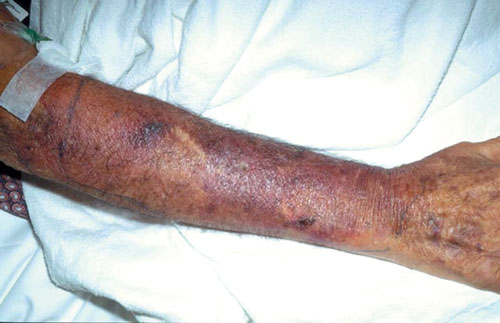
The bacteria "are found naturally in coastal areas" especially from May to October and "are not a result of pollution." Vibrio can infect the skin through an open wound. Two strains of the disease, vulnificus and parahaemolyticus, can be contracted by eating raw or undercooked seafood.
"I've grown up on the bay my whole life, and I'm 66," Rodney Donald told the Washington Post from his hospital bed at MedStar Washington Hospital Center.
Donald nearly lost his leg to vibrio.
"I'd never even heard about it," he said.
Vibrio infections in Maryland are up to 57 in 2013, compared to 25 in 2002, according to the Maryland Department of Health and Mental Hygiene. Six cases were reported this year. The Calvert County Health Department reported five infections around the Chesapeake Bay this summer.
There are an average of 50 confirmed cases, 45 hospitalizations and 16 deaths due to vibrio each year along the Gulf Coast, according to the CDC. The pathogen was less common in the rest of the U.S. where waters are cooler, but global warming is changing all that.
"It is likely that over the next few decades, if global warming continues, the vibrio will start to multiply in the tidal waters of the bay earlier in the year and will persist later into the fall and possibly the winter," Laurence Polsky, health officer at the Calvert County Health Department, told The Post. "This will increase the number of people exposed to the bacteria over the course of the year, and the result will be a higher average number of cases as each decade passes."
Donald went into the water on July 10 and went to bed feeling fine. At 1:30 a.m. he says he woke up to what felt like fire in his right leg.
Steve Gyland of Cod and Cappers Fish Market in Florida told WPTV last year that he picked up vibrio while scuba diving in the Bahamas and said the infection felt much the same way.
"It was like you were on fire. Like a burn-blister from a fire. It was weeks before I could walk on that leg," said Gyland.
"You could just watch the red, blistery skin just grow and expand and move up your leg," he said.
Donald had six surgeries and a skin graft. He spent two weeks in the hospital before being released.
People with open cuts should avoid the water or apply bandages and use an antiseptic gel afterwards. Anyone concerned about vibrio in food are told to adequately cook seafood.



Reader Comments
to our Newsletter